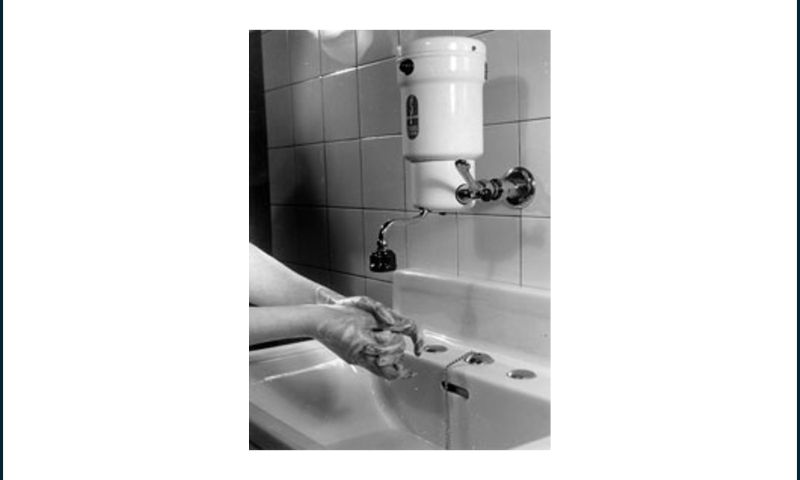
On demand water heaters have been around for more than a few decades. You may be surprised to hear that we have been working with on demand type water heaters for over 130 years! In fact, the year after the first commercially available water heater was created in 1889, we took a stab at on demand tankless water heaters. That venture failed spectacularly, but the story didn’t end there.
In 1929 the first electric tankless was invented by Stiebel Eltron and it worked extremely well. The issue at that time was trying to get enough electricity to power these devices and even then, gas was cheaper than electricity, so it didn’t get much traction. The industry kept chugging along trying to find a suitable gas fired version.
It wasn’t until the 1990s that a suitable gas fired tankless water heater came along, and it was European countries that made these systems popular. They were small, compact, and mounted on the wall, which was perfect for smaller European homes. Not surprisingly, this technology made its way over to North America and it exploded seemingly overnight. The first models that made it over to North America were what we would consider small to mid-size by today’s standards. Powerful enough for 1 shower and 1 sink simultaneously, but very efficient and reasonably priced. Some were just used as Point Of Use (POU) heaters and that worked very well but not for a traditional North American home.
Shortly after these systems arrived, manufacturers of these heaters understood that for the North American market, they needed a very high BTU input to meet the needs and comfort levels for users in Canada and the USA. This was the introduction of the 200MBTUH heaters, and that’s where things started to boom.
Before we continue with the history, let me explain why 200MBTUH was such an important number.
To understand exactly how the tankless heater works and what we need it to do, we need to go back to the BTUH and its modern definition.
One (1) BTU is the energy needed to heat one (1) pound of water by one (1) degree Fahrenheit. This concept helps us understand how a tankless water heater operates.
First, we don’t do anything with water in pounds – we use gallons. 1 gallon of water weighs 8.33 pounds. Second, we don’t want to heat this water in an hour. We want to heat it in a minute because all of our fixture flow rates are in GPM (Gallons Per Minute), so we multiply by 60. Third, we don’t just want to heat the water 1 degree Fahrenheit we want to heat this water from incoming ground water temp (let’s assume 40F) to a usable hot water temp. Let’s assume 120F, which gives us a delta of 80. And finally, we need to figure out how much water we need. For residential we can simply do a needs assessment with the homeowner and for commercial applications, we use either the hunter’s curve or the IAPMO curve. For this example, we are just going to use a residential system for simplicity.
The homeowner says they want to use 2 simultaneous showers @ 3GPM total and 1 dishwasher @ 1GPM totaling 4GPM max requirements at any given time.
Then we just do some math.
X = 8.33*60*80*4
X = 159,936
So, our tankless water heater must have a BTUH output of at least 159,936 to heat 4 gallons of water per minute from 40F incoming to 120F outgoing.
It’s also an important number to keep in mind of what BTU is required to heat just 1 GPM which translates into this formula.
X = 8.33*60*80
X = 39,984 or for ease of remembering I just use 40,000. I always know that it takes 40,000 BTUH to heat 1 GPM of water through a tankless water heater from 40F-120F.
The variables in this formula are the amount of water you need, the incoming water temp, and the supply of water temp. Although for most sizing cases we always use 120F as our outgoing water temp, it’s important to know that 120F is unusable for humans. 120F water in your shower will literally melt the skin from your bones!
Usually, the standard shower temperature is right around the 110F mark. The reason we heat to 120F is for other fixtures in the home such as sinks, dishwashers, and washing machines. In showers, we just mix in some cold water to decrease the shower temp from 120F to whichever temp is most comfortable for you.
So, when the first tankless water heaters hit the North American market, they were 120,000 BTUH capable of providing 3 GPM. Good in some cases but not in all. The next generation of heaters came in at 199,900 BTUH giving us 5GPM which was much more acceptable to users. They could continue to use hot water much the same way they did with their tank type. The big advantage of tankless was a MUCH higher efficiency level.
Atmospheric tank type water heaters had an efficiency level of around 60%-70% AFUE. Tankless water heaters came in at 95%, so the gas savings were monumental! The typical payback on a tankless was less than 5 years, which was music to the ears of those that purchased this new technology.
In the years following the 90s boom tankless water heaters have continued to adapt to their environment with built in recirculation pumps and freeze protection. The commercial market caught up with tankless in the late 2000s with the advent of super high BTU tankless like the Intellihot heaters with BTUH capabilities into the millions.
On demand heaters have come a long way from their humble beginnings in 1890 and with legislation always pushing for higher efficiencies likely aren’t going anywhere for a very long time.
Written by Matthew Reid, Heating Division Director
Image: The first “instantaneous”, or tankless water heater. The History of Stiebel Eltron (https://www.stiebel-eltron-usa.com/history-stiebel-eltron)
